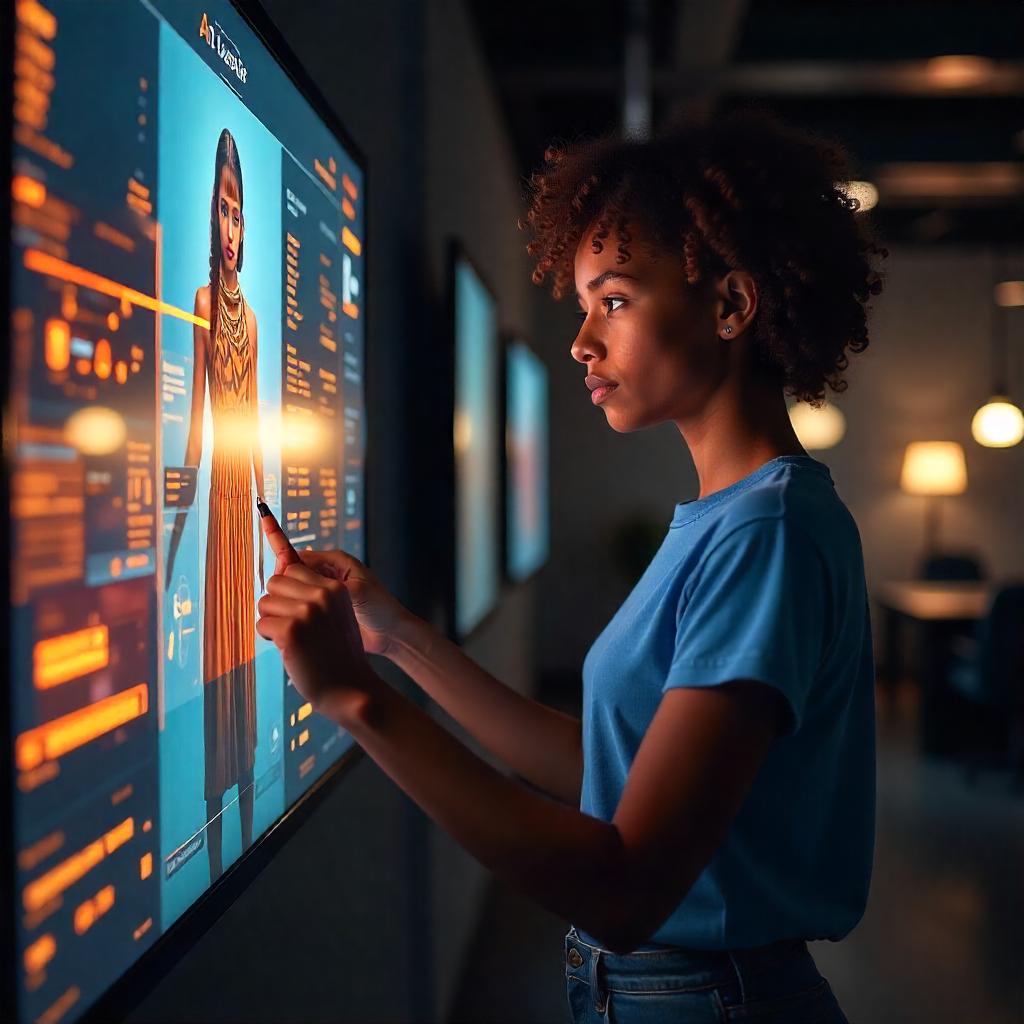Last week, I met Dr. Vijay Varadi—PhD in Finance, senior data scientist, and a long-time collaborator on tech-forward transformation projects. Our discussion wasn’t just about AI trends. It was about something far more urgent: what AI means for the future of fashion as a creative and commercial enterprise.
We weren’t debating automation or job displacement. We were mapping a blueprint for how fashion houses, creative teams, and brand leadership must adapt to remain relevant, efficient, and forward-looking in an increasingly AI-native world.
1. AI as a Strategic Lever in Fashion Design
Dr. Vijay:
“Creative strategy in fashion has traditionally relied on intuition, seasonal cycles, and trend forecasting that lags real-time market behaviour. AI shifts that entirely.”
He’s right. The role of AI is no longer experimental—it’s strategic. Here’s how:
- Accelerated Design Cycles: AI can generate design iterations in minutes, not weeks, enabling faster prototyping and seasonal responsiveness.
- Market-Aligned Creativity: Platforms like Heuritech and Edited analyse social media, e-commerce, and runway trends in real-time, helping brands avoid overproduction or aesthetic misalignment.
- Consumer-Centric Personalization: AI models interpret customer behaviour to suggest styles, fits, and product mixes tailored to specific personas.
- Sustainable Optimization: By forecasting demand with precision and digitizing sampling through CLO 3D or Browzwear, brands significantly reduce waste and costs.
This is not about replacing human creativity—it’s about aligning it with market relevance and operational scalability.

Credits: Banner image by Freepik Premium
2. Gap Analysis: Where Legacy Design Models Fall Behind
| Legacy Process | AI-Enhanced Process |
| Manual trend research via trade shows | Live digital trend analysis through AI |
| Multiple physical samples | Virtual 3D prototypes and real-time iteration |
| Intuition-based product planning | Predictive analytics guiding design direction |
| Slow go-to-market cycles | Agile, responsive product drops based on demand data |
| High inventory and markdown risk | Smart forecasting and inventory optimization |
For leadership teams, the opportunity is clear: reduce inefficiencies while unlocking new creative potential.
3. Tool Landscape: What the Market is Already Using
AI-Driven Design Platforms
- Designify, RunwayML, Fashwell – assisting in silhouette generation, style recombination, and fabric simulation
- Adobe Firefly – enabling generative creative workflows for moodboarding and sketching
Trend & Demand Prediction
- Heuritech, WGSN Insight+, Nextatlas – real-time market scanning for upcoming trends
- Edited, Stylumia – pricing, sell-through, and assortment intelligence
Textile & Sustainability Innovation
- ZMO.ai, Texintel, Turing Pattern – synthetic textile visualization, print-on-demand, zero-waste design integration
Virtual Sampling & Production
- CLO 3D, Style3D, Marvelous Designer – virtual fit, sample reduction, and collaborative feedback loops
- CALA – integrated product lifecycle management with AI recommendations
4. SWOT Analysis: AI in Fashion Design Strategy
| Strengths | Weaknesses |
| Accelerates design and development timelines | High onboarding cost for advanced tools |
| Drives data-backed creative direction | Requires strong data infrastructure & governance |
| Enhances sustainability | Complex integration with legacy systems |
| Improves ROI on inventory and marketing | Creative team buy-in may vary |
| Opportunities | Threats |
| Mass customization and hyper-personalization | Competitive advantage gap for late adopters |
| Agile, localized design capsules | Risk of creative homogenization if over-automated |
| Supply chain transparency via predictive models | Overdependence on third-party platforms |
| Expanded digital-first product strategies | Regulatory and IP ambiguity around AI-generated content |
5. Case Snapshots: How Leading Brands Are Applying AI
- Zara: Uses AI for demand forecasting, improving inventory turnover and localized product allocation
- Tommy Hilfiger x IBM: Leveraged AI to inspire creative teams using consumer insights and pattern mining
- H&M: Applies algorithms for trend discovery, buying decisions, and sustainability tracking
- Independents and D2C Brands: Startups using CLO 3D have launched full collections without a single physical sample—accelerating go-to-market timelines and cutting costs
6. Executive Considerations: Moving from Experimentation to Deployment
We both agreed to the fact that ,
“AI transformation isn’t a pilot program anymore. It’s a strategic mandate.”
For C-level leaders, that means shifting from curiosity to commitment. Key focus areas:
- Capability Building: Upskilling creative teams to collaborate with AI—not as a threat, but as a co-creator
- Data Strategy: Centralizing data from design, retail, e-commerce, and social platforms for accurate AI modelling
- Platform Evaluation: Choosing tools that align with your specific design workflow and supply chain
- Governance & IP: Establishing clear policies around AI-generated assets, creative ownership, and data security
Conclusion: The Designer’s Role Is Evolving—So Should the Strategy
Fashion has always been driven by instinct, inspiration, and aesthetic vision. But the new creative competitive edge lies in combining those strengths with real-time data, responsive tools, and AI-assisted intelligence.
The role of design leaders is no longer just about collection planning. It’s about steering creative ecosystems—where technology enables agility, sustainability, and relevance at scale.
I strongly believe that , “The future of fashion will be designed by those who understand both intuition and information.”

No responses yet